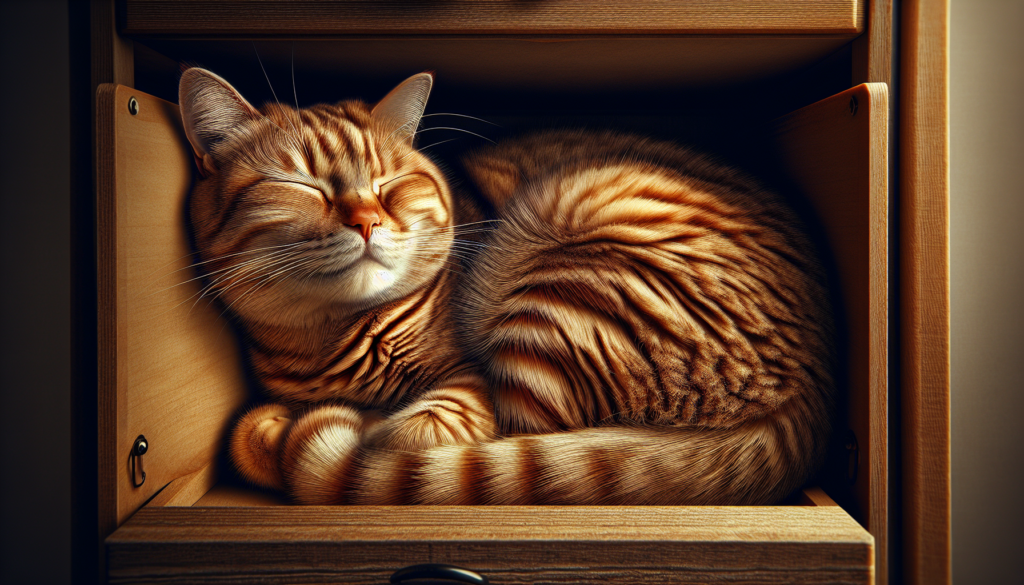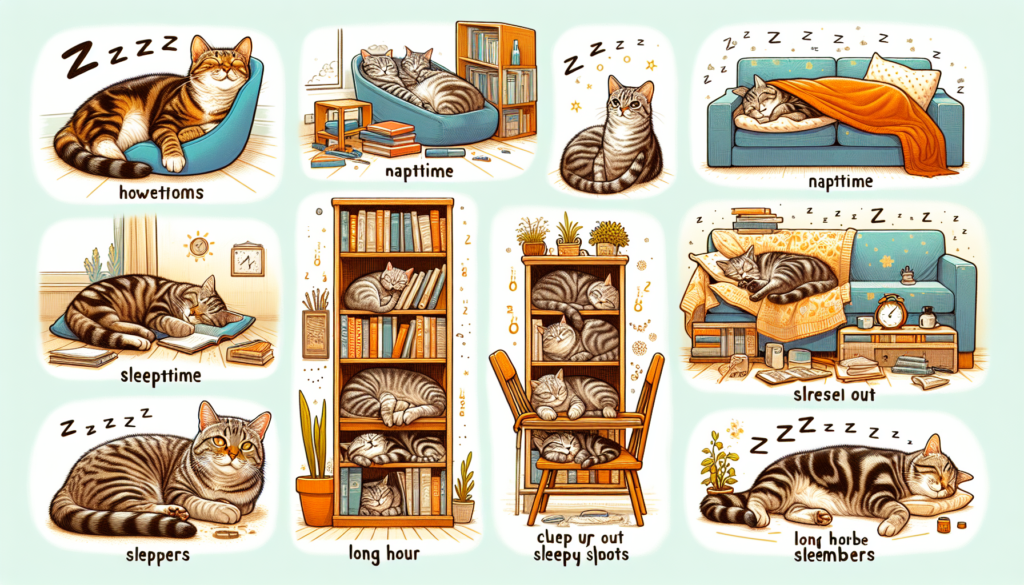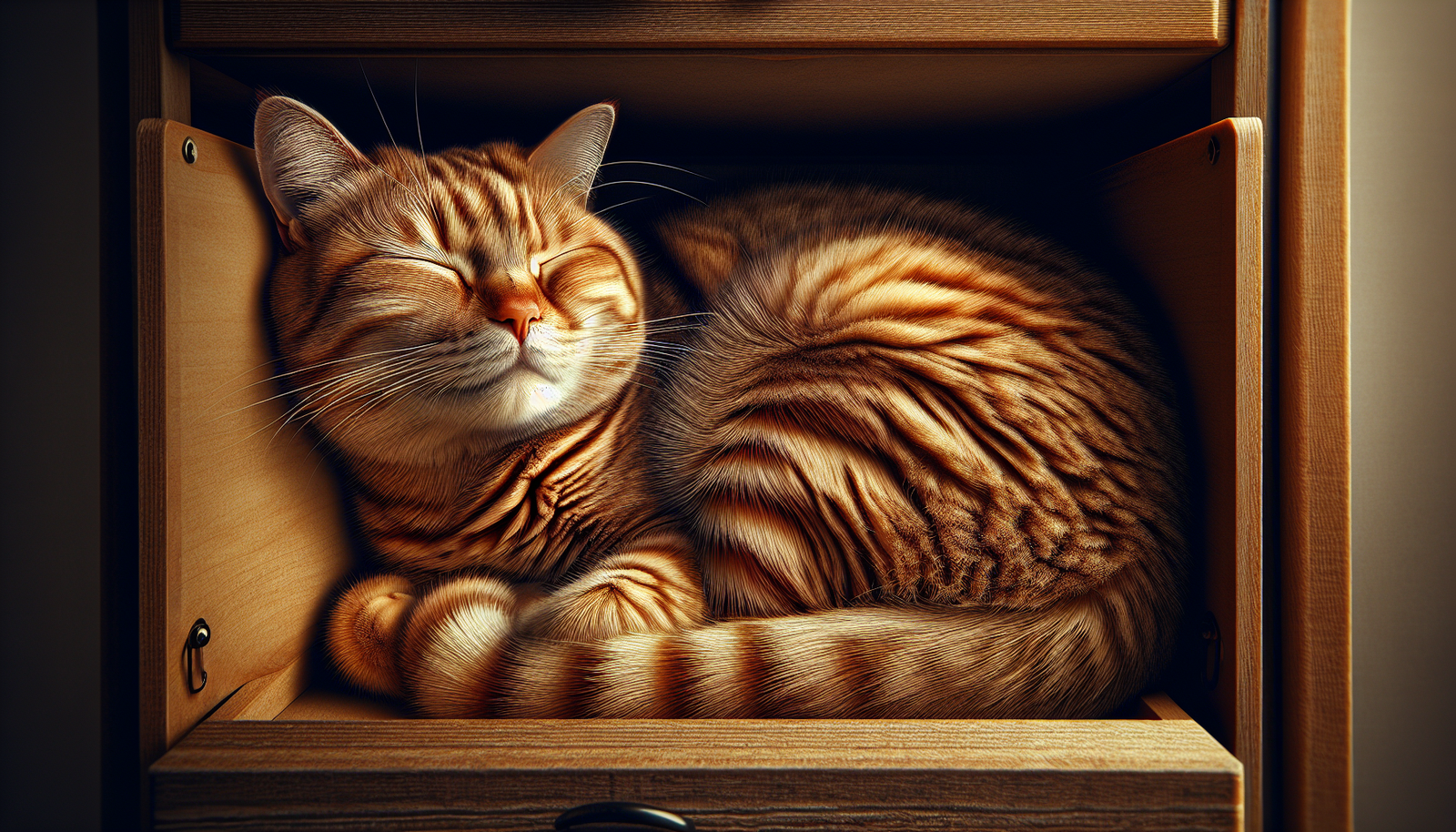Have you ever wondered why your tabby cat seems to be asleep for most of the day? In this article, we will explore the fascinating sleep patterns of tabby cats and uncover the reasons behind their extended slumber. From their preference for cozy cat naps to their unique sleep-wake cycle, you will gain a deeper understanding of just how much shut-eye these adorable felines require. So, grab a cup of tea and prepare to be captivated by the intriguing world of tabby cat sleep!
Sleep patterns of Tabby Cats

Overview
Tabby cats are a popular breed known for their distinctive coat patterns. They have unique sleep patterns that are worth understanding as a cat owner. By exploring their sleep-wake cycle, sleeping habits, and common sleep problems, you can provide the best care and ensure your furry friend gets the quality sleep they need.
Why do cats sleep so much?
If you’ve ever wondered why your tabby cat seems to spend most of their day snoozing, you’re not alone. Cats, in general, are known for sleeping for long periods, and tabby cats are no exception. There are several reasons why felines sleep so much.
One reason is their natural instinct and behavior. Cats are crepuscular animals, which means they are most active during dawn and dusk. As a result, they need ample rest to conserve energy during quieter times in between hunting and exploring their surroundings.
Another reason is survival. In the wild, cats need to hunt their prey, which requires bursts of intense energy. Sleeping allows them to replenish their energy stores and be ready for their next hunting session.
Furthermore, cats have evolved as nocturnal animals, which means they are naturally wired to be more active during nighttime. This adaptation may explain why they sleep for long stretches during the day.
The sleep-wake cycle of tabby cats
Understanding the sleep-wake cycle of tabby cats is crucial for comprehending their sleep patterns. Like humans and many other mammals, cats experience different sleep stages throughout the night.
The sleep-wake cycle consists of different stages, including drowsiness, light sleep, deep sleep, and REM (rapid eye movement) sleep. During drowsiness and light sleep, cats may be easily awakened, but as they enter deep sleep, they become less responsive to external stimuli.
REM sleep is a fascinating stage where most dreaming occurs. During this stage, cats may twitch, move their paws, or even make soft noises. It is believed to be important for memory consolidation and mental restoration.
The duration of each sleep stage varies, with deep sleep and REM sleep being the most prominent. On average, a tabby cat’s sleep-wake cycle lasts about 15 to 20 minutes, with multiple cycles occurring throughout the day and night.
Factors affecting tabby cat’s sleep
Several factors can influence a tabby cat’s sleep patterns and quality of sleep. Understanding these factors can help you identify potential sleep disturbances in your furry friend.
Life stage and age play a significant role in a cat’s sleep patterns. Kittens and young cats tend to have more energy and may sleep less than adult and senior cats. Additionally, older cats may experience sleep disturbances due to age-related health conditions.
Health conditions and medications can also affect sleep. Cats with pain, discomfort, or illnesses may find it challenging to get restful sleep. Some medications may also cause drowsiness or disrupt the sleep-wake cycle.
Environmental factors such as noise, temperature, and light can impact a cat’s sleep. Excessive noise or bright lights may disturb their sleep, while a comfortable and cozy environment can promote better rest.
Stress and anxiety can have profound effects on a cat’s sleep. Changes in their routine, introduction of new pets, or environmental stressors can lead to restlessness and sleep disturbances.
Feeding and digestion can influence sleep patterns as well. Cats may feel drowsy after a meal due to the energy expended for digestion. On the other hand, hunger pangs or gastrointestinal issues may cause discomfort and disrupt sleep.
Exercise and activity levels also play a role in a cat’s sleep. Regular physical activity helps cats burn off excess energy, leading to better sleep. Lack of exercise, especially for indoor cats, can result in pent-up energy and disrupted sleep.

How long do tabby cats sleep?
On average, tabby cats sleep for approximately 12 to 16 hours a day. However, individual variations and factors such as age, health, and activity levels can influence sleep duration.
Kittens and young cats tend to sleep less and have bursts of energy throughout the day. As they grow older, they may gradually increase their sleep duration. Adult and senior cats, on the other hand, require more rest and may sleep closer to the upper end of the range.
Sleep deprivation can have adverse effects on a cat’s overall health and behavior. It can lead to irritability, decreased immune function, and cognitive impairment. Therefore, it is crucial to ensure that your tabby cat gets enough sleep to stay healthy and happy.
Comparing sleep patterns between different cat breeds, tabby cats generally have similar sleep requirements to other breeds. However, individual cats within the same breed may have variations in sleep duration and habits.
Kittens have different sleep requirements compared to adult cats. They need more sleep to support their rapid growth and development. As they mature, their sleep patterns will gradually adjust to resemble those of adult cats.
Sleep positions and locations
Tabby cats can be quite creative when it comes to choosing sleep positions. They may curl up in a ball, stretch out, or even sleep on their backs with their paws in the air. Each sleep position serves a purpose, providing comfort and warmth.
In terms of sleep locations, tabby cats are known for seeking out cozy and secure spots. They may gravitate towards soft blankets, plush beds, or warm sunny spots near windows. Providing your cat with comfortable sleep options can ensure they have a restful slumber.
Dreaming and REM sleep
Tabby cats, like other felines, experience REM sleep, the stage associated with dreaming. While it is challenging to definitively prove that cats dream, their behavior during REM sleep suggests that they do.
During REM sleep, you may notice your tabby cat twitching, moving their paws, or making soft noises. These movements may mimic hunting or playing behaviors, indicating they are engaged in dreaming.
REM sleep is also believed to be important for memory consolidation in cats. It assists in processing the day’s events and consolidating newly acquired information. A lack of REM sleep or disrupted sleep patterns may lead to cognitive difficulties.
Sleeping habits of indoor and outdoor tabby cats
The sleeping habits of tabby cats can vary depending on whether they are indoor or outdoor cats. Indoor cats tend to sleep more due to the limited physical activity and stimulation they receive. They may engage in short bursts of play and exploration, followed by extended periods of rest.
Outdoor cats, on the other hand, may have more diverse sleep patterns. They have access to a wider range of stimuli and may have interrupted sleep due to environmental factors such as weather, noises, or predators. Safety concerns also arise with outdoor cats, as they are prone to accidents or encounters with other animals.
To compensate for the limited stimulation of indoor environments, it is important to provide environmental enrichments for indoor cats. This can include interactive toys, scratching posts, and perches to encourage physical activity and mental stimulation.
Sleeping patterns based on age and health
Age and health conditions can significantly impact a tabby cat’s sleeping patterns. Kittens and young cats tend to have bursts of energy and may sleep less. As they age, they gradually increase their sleep duration, and senior cats may experience further changes due to age-related health conditions.
Senior cats may have difficulty getting comfortable and may wake up more frequently during the night. Arthritis or mobility issues can also affect their sleeping positions and overall sleep quality.
Furthermore, cats with certain health conditions or medications may experience sleep disturbances. For example, cats with respiratory problems may snore or experience sleep apnea, while cats in pain may struggle to find a comfortable sleep position.
Consulting with a veterinarian can be helpful in identifying and addressing any underlying health issues that may be affecting your tabby cat’s sleep patterns.
Common sleep problems in tabby cats
While tabby cats generally enjoy restful sleep, they can sometimes experience sleep problems. It is essential to recognize these issues and seek appropriate solutions to help your furry friend get the quality sleep they need.
Insomnia or sleeplessness can occur for various reasons, such as stress, pain, or discomfort. If your tabby cat is having difficulty falling asleep or staying asleep, it is important to address any underlying causes and create a soothing sleep environment.
Excessive daytime sleepiness may indicate poor sleep quality or an underlying health condition. If your tabby cat appears excessively drowsy during the day, consult with a veterinarian to rule out any potential health issues.
Sleep disruptions and frequent awakenings can be caused by environmental factors such as noise or changes in routine. Ensuring a calm and consistent sleep environment can help minimize these interruptions.
Snoring and sleep apnea can affect some tabby cats, especially those with respiratory problems or anatomy that predisposes them to breathing difficulties. If you notice loud snoring or interrupted breathing during sleep, consult with a veterinarian to evaluate and manage these issues.
There are remedies and solutions available for common sleep problems in tabby cats. These may include environmental modifications, such as reducing noise or providing a more comfortable sleep surface, as well as addressing any underlying health conditions through veterinary care.
In conclusion, understanding the sleep patterns of tabby cats is important for providing them with the care and support they need to enjoy restful sleep. By considering factors such as age, health, and environment, you can ensure your furry friend gets the quality sleep necessary for their overall well-being. Creating a comfortable sleep environment and addressing any sleep problems will help your tabby cat maintain optimal health and happiness.

